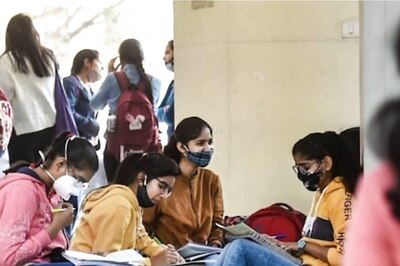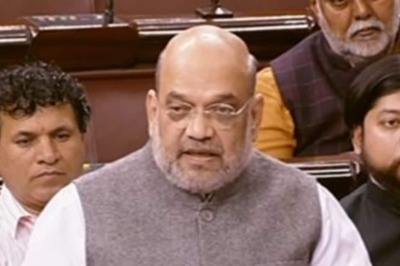
views
After a certain age, men and women, especially those with sedentary lifestyles, often get a paunch. They join gym, and tell the trainer, ‘I will be fit if I could just get rid of this bulge. Please tell me exercises that could remove this.’ A good trainer replies that there is no such thing as spot reduction. “Although targeting fat loss in specific areas of the body would be ideal, the theory of spot reduction has not been proven effective by scientific studies,” says the popular website Healthline.com.
Getting rid of paunch—or fat from any other part of the body—is not an isolated task; it involves a complete change in lifestyle. From physical activity to diet to sleep to vice control—everything has to undergo a sea change. And if you can do that, the results would be comprehensive—better metabolism, higher immunity, healthier heart, etc. You would get much more than a flat stomach.
Unemployment is a similar problem: it cannot be eliminated or reduced by just targeting it. Like tummy reduction, job creation is also contingent upon a comprehensive set of actions, most of which are well-known: easier and fewer compliances, light regulation, predictable policies, flexible labour laws, limited state intervention in the economy, a benign administration, a good law and order situation.
Government can’t play God to employment. It can’t say, “Let there be employment, and there was employment.” Being a product and function of human contrivance, government can and must do what is humanly possible; and all the prerequisite actions mentioned in the previous paragraph are within the realm of possibility. These actions also go by the name of economic reforms. The government must focus on them.
Finance Minister Nirmala Sitharaman has said more than once that she is committed to reforms. In her 2021-22 Budget speech, she hit the nail on the head by highlighting the role of manufacturing in employment generation, for the sector has huge employment potential. She had said in her Budget speech, “For a $5-trillion economy, our manufacturing sector has to grow in double digits on a sustained basis. Our manufacturing companies need to become an integral part of global supply chains, possess core competence and cutting-edge technology. To achieve all of the above, PLI schemes to create manufacturing global champions for an Atmanirbhar Bharat have been announced for 13 sectors. For this, the government has committed nearly Rs 1.97 lakh crore, over 5 years starting FY 2021-22. This initiative will help bring scale and size in key sectors, create and nurture global champions and provide jobs to our youth.”
Unfortunately, manufacturing has been shrinking since 2011-12. Its share in the country’s gross value added (GVA) has come down from 17.4 per cent in 2011-12 to 14.5 per cent in 2020-21. In this fiscal too, despite the government’s package, manufacturing hasn’t done wonders. It grew by 18.5 per cent in the April-November period, but this was against -17.2 per cent in the corresponding period last fiscal.
There are three things that the government should do in earnest; there is also something that it should not do. We begin with what it shouldn’t do: it should not set up a committee to look into the issues that plague factories and employment. There is enough expertise and wisdom already available; it just needs to be put to use.
The government, under the Congress-led United Progressive Alliance, had approved a National Manufacturing Policy in November 2011 “with the objective of enhancing the share of manufacturing in GDP (gross domestic product) to 25 per cent within a decade and creating 100 million jobs.”
Evidently, that hasn’t happened. The Narendra Modi government can strive to attain these objectives; it can even garner, if it tries hard, bipartisan support for the implementation of the policy.
First, in formulating and executing policies, there should be more inputs from and involvement of India Inc. The economy cannot be left in the hands of economists, experts, politicians, and bureaucrats; the stakeholders ought to have a greater say.
Second, Nirmala Sitharaman’s ministry has to clear the GST mess, which has been caused mainly because of variable rates. This is a source of trouble for small entrepreneurs.
And finally, the government has to lessen the fear of agencies like the Enforcement Directorate and the Income Tax department. An industrialist can get a few visitations from these dreaded departments just because his son or daughter posted something nasty about some politician or government on social media.
Unsurprisingly, rich Indians are leaving the country. According to a study by AfrAsia Bank, 7,000 high net worth individuals (HNWIs) left India in 2019. India ranked second in the list of HNWIs leaving their native country; China topped the list. An HNWI, according to the bank, is a person worth between $1 million and $9.9 million.
This is not just the flight of Indians but also of money—huge sums, totalling billions of dollars. This money, which could have been invested in our country and created millions of jobs, has gone elsewhere.
In her forthcoming Budget, Sitharaman must do her bit to end this trend—or at least abate it.
The author is a freelance journalist. The views expressed in this article are those of the author and do not represent the stand of this publication.
Read all the Latest Opinions here



















Comments
0 comment